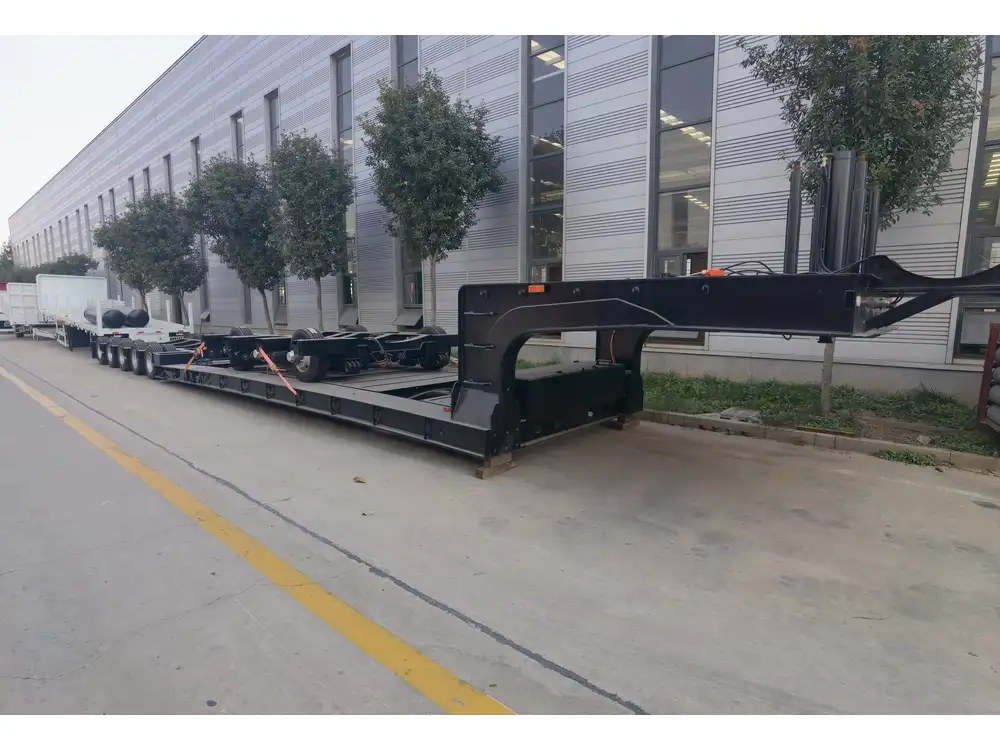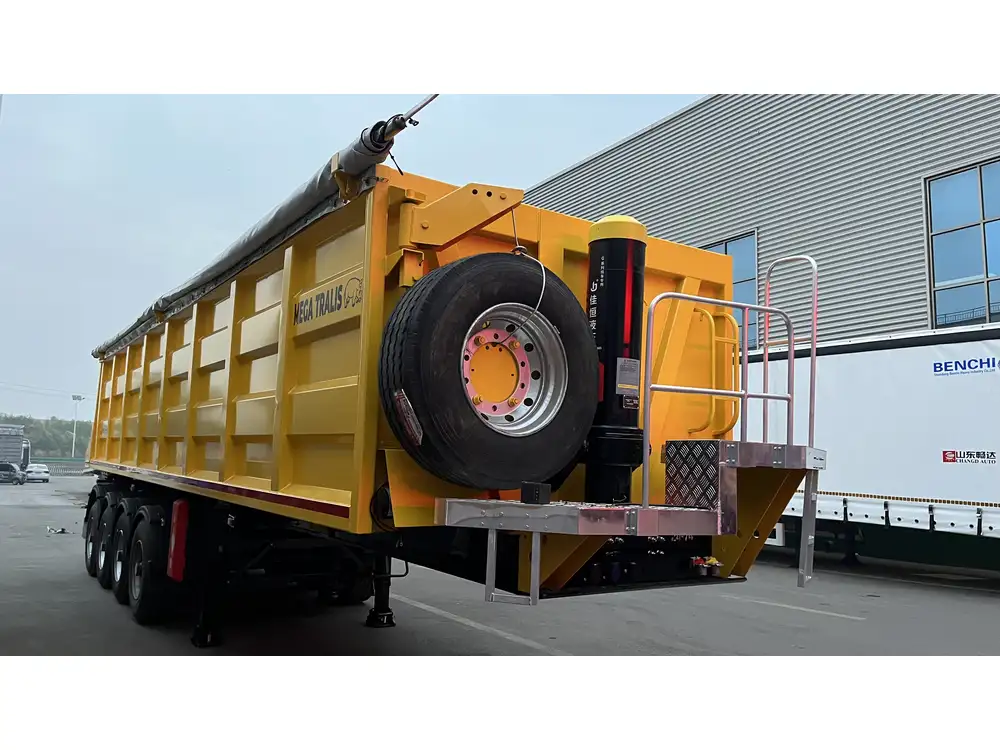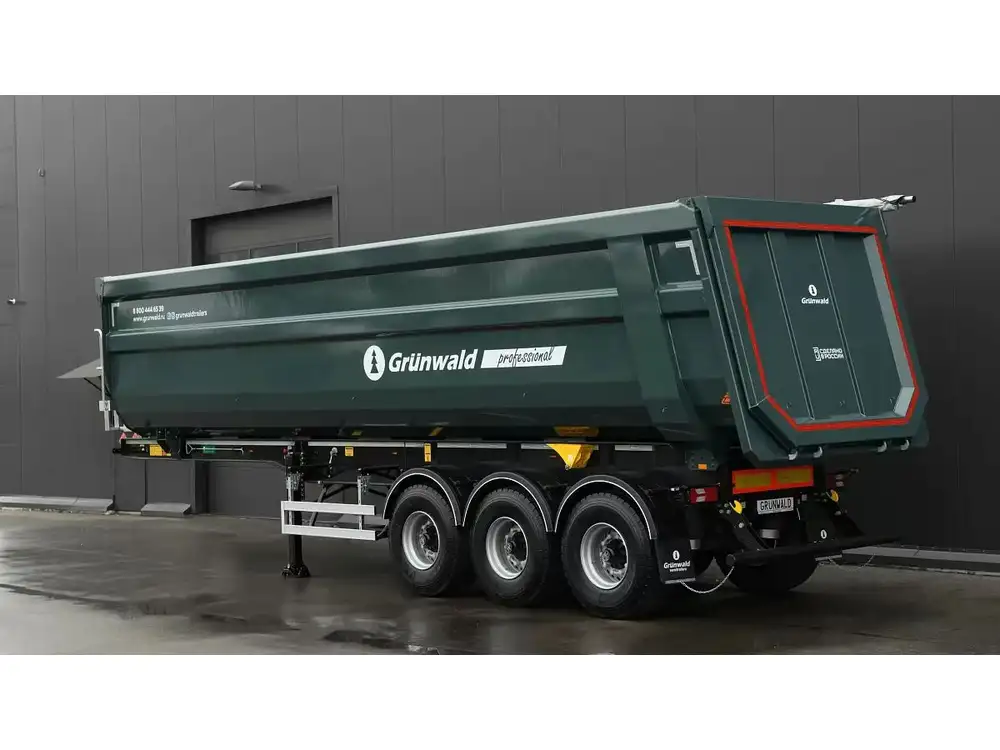What is a Pushod Semi-Trailer Brake?
Definition and Functionality
A Pushod semi-trailer brake is a specialized braking system predominantly used in the transport of heavy cargo via semi-trailers. This system incorporates advanced engineering techniques to ensure optimal performance, stability, and safety under various load conditions. The primary purpose of the Pushod semi-trailer brake is to effectively halt, slow down, and maintain control of the trailer, which is critical when navigating steep gradients, sharp corners, or sudden stops.
At the heart of its functionality lies a hydraulic system that acts upon the trailer’s wheels. When the driver engages the brake via the tractor unit, hydraulic fluid is directed towards brake cylinders mounted on the trailer’s axles. This fluid pressure activates the braking mechanism, causing pads to clamp onto the brake drums or discs, thereby generating the friction necessary to reduce speed.

Types of Brakes Used
The Pushod semi-trailer brake system typically utilizes two main types of braking technology:
Air Brakes:
- Representing the most common braking system in semi-trailers, air brakes operate using compressed air. This system ensures that each wheel receives equal brake force, which minimizes wheel lockup and enhances overall stability.
- Components include:
- Air Compressor: Produces compressed air as required.
- Brake Chambers: Convert air pressure into mechanical force.
- Slack Adjusters: Automatically adjust the brake shoes as they wear down.
Disc Brakes:
- Increasingly favored for their superior cooling capabilities, disc brakes provide more consistent stopping power and reduced brake fade, particularly under heavy loads and prolonged use.
- Key elements include:
- Brake Rotor: A disc-shaped component that rotates with the wheel.
- Caliper: Houses the brake pads and applies pressure to the rotor.
- Brake Pads: Friction material that grips the rotor, creating the necessary friction.
Pushod Brake System Advantages
Enhanced Safety:
- The Pushod braking system is designed to minimize stopping distances, which is crucial for navigating busy roads and inclement weather conditions.
Durability and Maintenance:
- Built to withstand heavy use, Pushod brakes require less frequent maintenance than traditional braking systems, significantly reducing downtime and service costs.
Improved Load Management:
- This system allows for the precise modulation of braking forces, adapting to load changes and ensuring a stable drive, regardless of cargo weight.
Key Components of Pushod Semi-Trailer Brake Systems
In-depth comprehension of the Pushod semi-trailer brake system necessitates an understanding of its integral components. Each part plays a vital role in maintaining overall performance, safety, and longevity.
| Component | Description |
|---|---|
| Brake Pedal | The driver’s interface, allowing them to engage the brake system. |
| Pull Rod | Connects the brake pedal to the actuator, transmitting force. |
| Actuator | Converts mechanical force from the brake pedal into hydraulic pressure. |
| Brake Pad | Friction material that slows the wheel when engaged. |
| Rotor/Drum | The rotating part against which the pad or shoe presses to create friction. |
| Master Cylinder | Converts the brake pedal movement into hydraulic pressure. |
| Brake Lines | Tubes through which hydraulic fluid travels to the brake actuator. |

Proper Maintenance of Pushod Semi-Trailer Brake Systems
Routine Inspections
Conducting regular inspections is critical for the health of a Pushod semi-trailer brake system. Consider the following steps:
Visual Checks:
- Inspect brake pads and shoes for wear.
- Examine rotors and drums for signs of cracking or discoloration.
- Look for leaks in brake lines and cylinders.
Hydraulic System Audit:
- Ensure the master cylinder is functioning correctly.
- Check for the right fluid level and quality in the hydraulic reservoir.
- Inspect hoses for wear and potential points of failure.
Recommended Service Intervals
Establishing a regular maintenance schedule based on mileage or usage can significantly prolong the lifespan of the brake system:
- Every 10,000 miles: Check brake fluid and adjust brakes as necessary.
- Every 20,000 miles: Inspect all brake components for wear, including pads, rotors, and hoses.
- Every 50,000 miles: Comprehensive system check including a full fluid flush and component replacement as needed.

Troubleshooting Common Pushod Semi-Trailer Brake Issues
Despite their robust design, Pushod semi-trailer brakes can encounter issues. Understanding these problems allows for timely interventions that can prevent serious accidents.
Common Symptoms and Solutions
| Symptom | Possible Causes | Recommended Solutions |
|---|---|---|
| Decreased braking power | Worn brake pads | Replace pads immediately |
| Pulling to one side | Uneven wear on brakes | Inspect and replace worn components |
| Spongy brake pedal | Air in the hydraulic system | Bleed the brake lines |
| Grinding noise when braking | Worn or damaged rotors | Inspect and resurface or replace rotors |
| Brake fluid leaks | Damaged hoses or connections | Replace damaged components and check system |
Comparative Analysis: Pushod Brakes vs. Other Braking Systems
In evaluating the functionality and reliability of the Pushod semi-trailer brake system, it is insightful to juxtapose it with alternative braking mechanisms commonly used in the transport industry.

Air vs. Hydraulic Brakes
| Feature | Pushod Air Brake | Pushod Hydraulic Brake |
|---|---|---|
| Performance | Highly responsive, suitable for heavy loads | Offers fine control at lower weights |
| Maintenance | Requires regular checks due to air leaks | Easier maintenance, but fluid quality is crucial |
| Weight | Generally heavier due to compressor and tank | Lighter design with less bulk |
| Cost of Service | Higher due to complexity and air system | Lower overall service costs due to simplicity |
Future Innovations in Pushod Brake Technology
As the transport industry continues to evolve, so too does the technology surrounding braking systems. The Pushod semi-trailer brake system is not an exception; it is on the cusp of several potential advancements:
Electronic Braking Systems (EBS):
- Integration with digital control systems enhances overall braking efficiency and provides real-time feedback to operators on braking performance.
Regenerative Braking:
- Future systems may include regenerative braking features, where kinetic energy during braking is converted back into usable power, thereby improving fuel efficiency.
Automatic Brake Adjustment:
- Technological advancements may lead to systems that autonomously adjust brake performance based on load and environmental conditions, further enhancing safety.
Conclusion
Understanding the intricacies of Pushod semi-trailer brakes is essential for any operator or fleet manager in the transportation sector. From the definition and functionality to the component breakdown, routine maintenance, troubleshooting common issues, and examining future innovations, the Pushod brake system presents a comprehensive framework for ensuring safety and efficiency on the road.
By investing time in understanding and maintaining pushod semi-trailer brakes, operators can not only vastly improve safety but also optimize their overall operational costs. As the industry moves toward innovations that promise enhanced performance and reliability, staying informed will ultimately allow users to make better decisions in the ever-evolving domain of transport logistics.



